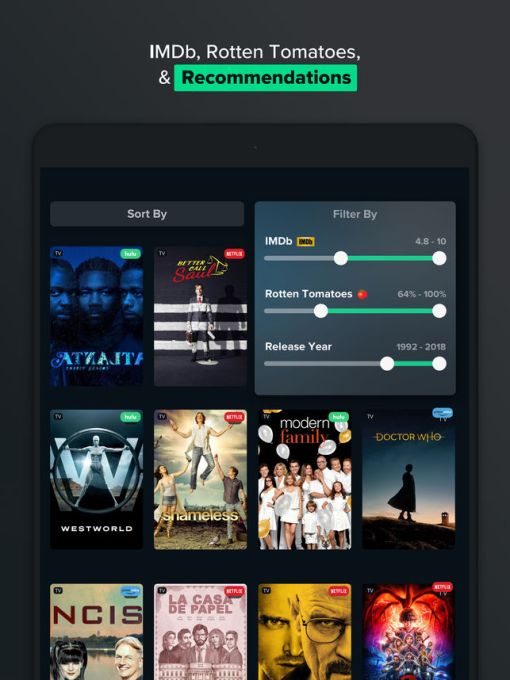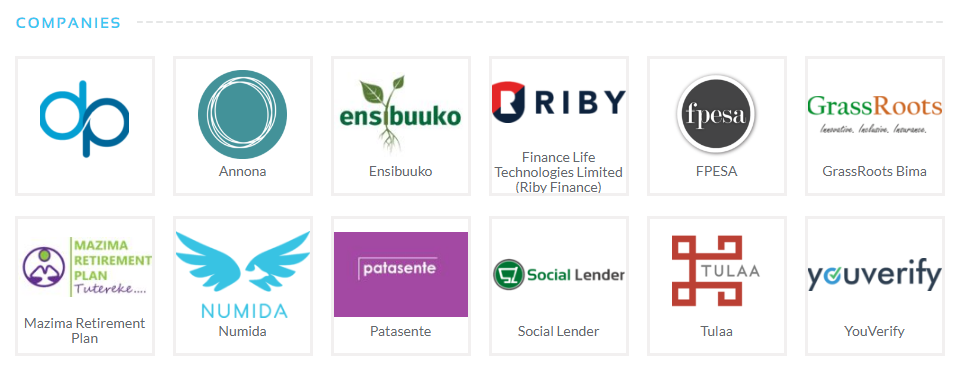Reelgood, a startup aimed at helping cord cutters find their next binge, is out today with its biggest update yet. The company has been developing its streaming guide over the past year to solve the issues around discovery that exist when consumers drop traditional pay TV in favor of streaming services like Netflix, Hulu, HBO, Prime Video, and others.
The company first launched as a website in the summer of 2017 before expanding to mobile last fall. During that time, it’s grown to over a million monthly active users who now check in with Reelgood to find something new to watch.
With today’s update to its iOS app, Reelgood is adding a number of features, including personalized recommendations, curated selections, alerts for shows and movies you’re tracking, advanced search and filtering, and the ability to track content over 50 more streaming services, among other things.
As discovery is Reelgood’s focus, the updated app now offers two new types of recommendations.
One is Reelgood’s own take on “Because You Watched” – a type of viewing suggestion you’ll find today on individual services, like Netflix. But those are more limited because they’ll only suggest other shows or movies they offer themselves. Reelgood’s recommendations will instead span all the services you have access to, offering a more universal set of suggestions.
This feature is tied to Reelgood’s watch history, where you track which shows and movies you’ve seen. That means you have to use Reelgood as your tracking app as well, in order for this feature to work.
The app’s other new way of offering recommendations is less personalized – in fact, it’s random. Because sometimes serendipity is a better way to find something, a feature called “Reelgood Roulette” lets you shake your device while on the Discover tab to get a non-personalized, random suggestion.
Reelgood credits Netflix Roulette, created by Andrew Sampson, as the basis for this addition. In fact, it acquired the rights to the software last year, and then updated it to support more streaming services.

The app also now offers more powerful search and filtering capabilities involving Rotten Tomatoes, IMDb scores, plus cast and crew listings. This allows you to query up things like “Meryl Streep’s top-rated movies” or “drama series with an IMDb rating of at least 8.0 that came out in the last 3 years,” for example.
Reelgood’s search and filtering mechanisms have always been the place where it excels, but it’s less useful as a simple tracker. For that, I prefer TV Time, which lets you quickly mark entire seasons or series as “Watched” and offers discussion boards for each episode where you can post photos and memes and chat with other fans.
TV Time, however, hasn’t been as useful for making recommendations – its suggestions have been off-the-mark when I’ve tried it in the past, often leaning too heavily on network’s back catalogs than pushing me to more current or trending content. It makes me wish I could combine the two apps into one for the best of both worlds – tracking and recommendations.

The updated Reelgood app also doubles down on its own curation capabilities by offering editorial collections. For example: 2018 Emmy Nominees, IMDb’s Top 250 Movies, Original Picks, Dark Comedies, British Humour, and more. This can be a good way to find something to watch when you’re really stumped.
And as you discover new shows and movies you want to see, you can set alerts so you’ll be notified when they hit one of the streaming services you’re subscribed to, similar the tracking feature on Roku OS.
Finally, Reelgood’s update includes the addition of 50+ streaming services – that means there’s now support for more niche services like IndieFlix, FilmStruck, Shudder, Fandor, CrunchyRoll, Mubi, AcornTV and Starz, among others.

“Reelgood 4.0 is the culmination of all we’ve learned about how people watch and the increasingly fragmented streaming world,” said Eli Chamberlin, Reelgood’s head of product and design. “Our aim with this release was to take all the streaming content out there, and display it in the most meaningful way possible so that people can get the most out of their existing streaming services without wasting countless hours browsing.”
The new app is rolling out to iOS today on the App Store.



